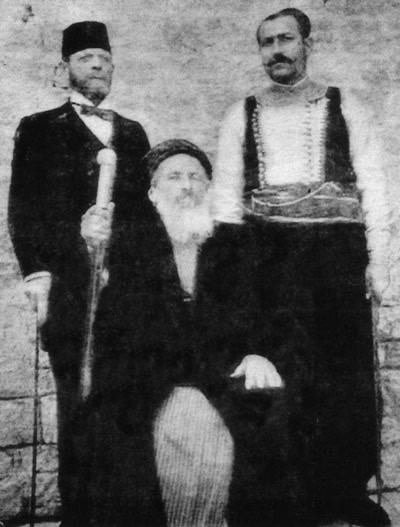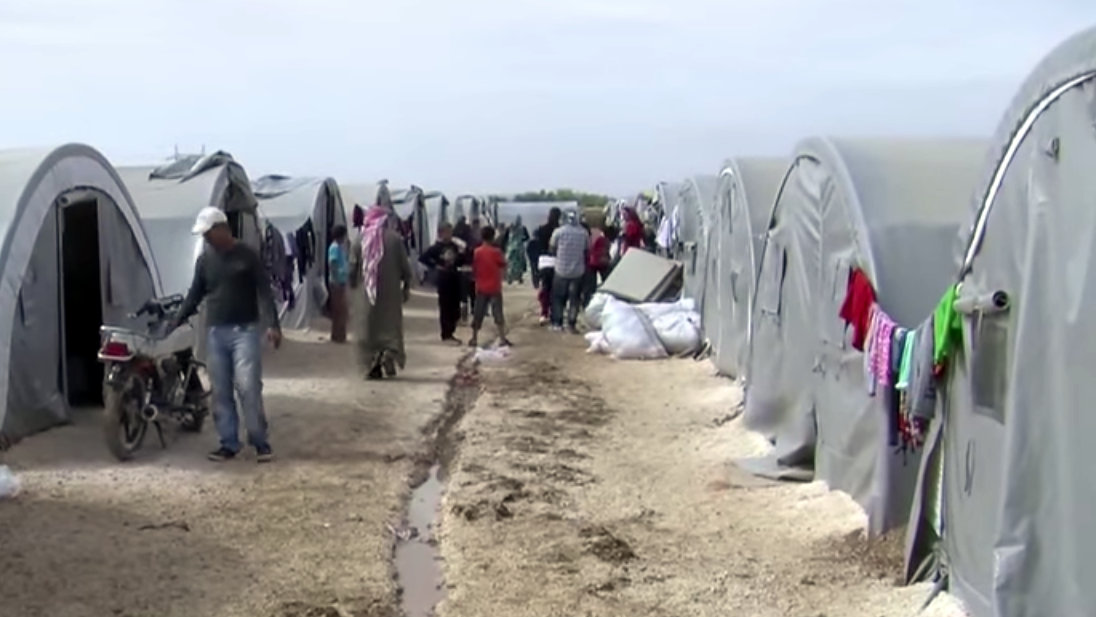|
Judeo-Syrian Arabic
Judeo-Syrian Arabic, also called Syrian Judeo-Arabic, is a dialect of the Judeo-Arabic dialects based on Syrian Arabic. It was traditionally written in the Hebrew script. History After the exodus of Jews from Syria, Judeo-Syrian Arabic largely died out in favor of English, Spanish, and Hebrew among the Syrian Jewish diaspora. There was a Judeo-Syrian Arabic speaking community in İskenderun until 1998 but it no longer exists. Features Judeo-Syrian Arabic contained Ladino and Hebrew loanwords. Media There are YouTube videos and samples of Judeo-Syrian Arabic available online. The Syrian Jewish community in New York City New York, often called New York City (NYC), is the most populous city in the United States, located at the southern tip of New York State on one of the world's largest natural harbors. The city comprises five boroughs, each coextensive w ... has maintained a strong Judeo-Syrian Arabic musical tradition. Sample text References {{Semitic ... [...More Info...] [...Related Items...] OR: [Wikipedia] [Google] [Baidu] |
Syrian Jews
Syrian Jews ( ''Yehudey Surya'', ''al-Yahūd as-Sūriyyūn'', colloquially called SYs in the United States) are Jews who live in the region of the modern state of Syria, and their descendants born outside Syria. Syrian Jews derive their origin from two groups: from the Jews who inhabited the region of today's Syria from History of ancient Israel and Judah, ancient times (known as Musta'arabi Jews), and sometimes classified as Mizrahi Jews (''Mizrahi'' is a generic term for the Jews with an extended history in Asia or North Africa); and from the Sephardi Jews (referring to Jews with an extended history in the Iberian Peninsula, i.e. Spain and Portugal) who fled to Syria after the Alhambra Decree forced the expulsion of the Jews from Spain in 1492. There were large communities in Aleppo ("Halabi Jews", ''Halab'' is "Aleppo" in Arabic) and Damascus ("Shami Jews") for centuries, and a smaller community in Qamishli on the Turkish border near Nusaybin. In the first half of the 20th ce ... [...More Info...] [...Related Items...] OR: [Wikipedia] [Google] [Baidu] |
Jewish Exodus From The Muslim World
The Jewish exodus from the Muslim world occurred during the 20th century, when approximately 900,000 Jews migrated, fled, or were expelled from Muslim-majority countries throughout Africa and Asia, primarily as a consequence of the establishment of the State of Israel. Large-scale migrations were also organized, sponsored, and facilitated by Zionist organizations such as Mossad LeAliyah Bet, the Jewish Agency, and the Hebrew Immigrant Aid Society. The mass movement mainly transpired from 1948 to the early 1970s, with one final exodus of Iranian Jews occurring shortly after the Islamic Revolution in 1979–1980. An estimated 650,000 (72%) of these Jews resettled in Israel. A number of small-scale Jewish migrations began across the Middle East in the early 20th century, with the only substantial '' aliyot'' (Jewish immigrations to the Land of Israel) coming from Yemen and Syria. Few Jews from Muslim countries immigrated during the British Mandate for Palestine. Prior to Isr ... [...More Info...] [...Related Items...] OR: [Wikipedia] [Google] [Baidu] |
Diaspora Languages
A diaspora ( ) is a population that is scattered across regions which are separate from its geographic place of origin. The word is used in reference to people who identify with a specific geographic location, but currently reside elsewhere. Notable diasporic populations include the Jewish Diaspora formed after the Babylonian exile; Assyrian diaspora following the Assyrian genocide; Greeks that fled or were displaced following the fall of Constantinople and the later Greek genocide as well as the Istanbul pogroms; the emigration of Anglo-Saxons (primarily to the Byzantine Empire) after the Norman Conquest of England; the southern Chinese and South Asians who left their homelands during the 19th and 20th centuries; the Irish diaspora after the Great Famine; the Scottish diaspora that developed on a large scale after the Highland and Lowland Clearances; Romani from the Indian subcontinent; the Italian diaspora, the Mexican diaspora; the Circassian diaspora in the aftermath of ... [...More Info...] [...Related Items...] OR: [Wikipedia] [Google] [Baidu] |
Jewish Languages
Jewish languages are the various languages and dialects that developed in Jewish communities in the Jewish diaspora, diaspora. The original Jewish language is Hebrew, supplanted as the primary vernacular by Aramaic following the Babylonian captivity, Babylonian exile. Jewish languages feature a syncretism of Hebrew language, Hebrew and Judeo-Aramaic languages, Judeo-Aramaic with the languages of the local non-Jewish population. Ancient history Early Northwest Semitic languages, Northwest Semitic (ENWS) materials are attested through the end of the Bronze Age—2350 to 1200 BCE. At this early state, Biblical Hebrew was not highly differentiated from the other Northwest Semitic languages (Ugaritic and Amarna letters, Amarna Canaano-Akkadian language, Canaanite), though noticeable differentiation did occur during the Iron Age (1200–540 BCE). Hebrew as a separate language developed during the latter half of the 2nd millennium BC, second millennium BCE between the Jor ... [...More Info...] [...Related Items...] OR: [Wikipedia] [Google] [Baidu] |
Judeo-Arabic Languages
Judeo-Arabic (; ; ) sometimes referred as Sharh, are a group of different ethnolects within the branches of the Arabic language used by jewish communities. Although Jewish use of Arabic, which predates Islam, has been in some ways distinct from its use by other religious communities, it is not a uniform linguistic entity. Varieties of Arabic formerly spoken by Jews throughout the Arab world have been, in modern times, classified as distinct ethnolects. Under the ISO 639 international standard for language codes, Judeo-Arabic is classified as a macrolanguage under the code jrb, encompassing four languages: Judeo-Moroccan Arabic (aju), Judeo-Yemeni Arabic (jye), Judeo-Egyptian Arabic (yhd), and Judeo-Tripolitanian Arabic (yud). Judeo-Arabic, particularly in its later forms, contains distinctive features and elements of Hebrew and Aramaic. Many significant Jewish works, including a number of religious writings by Saadia Gaon, Maimonides and Judah Halevi, were originall ... [...More Info...] [...Related Items...] OR: [Wikipedia] [Google] [Baidu] |
New York City
New York, often called New York City (NYC), is the most populous city in the United States, located at the southern tip of New York State on one of the world's largest natural harbors. The city comprises five boroughs, each coextensive with a respective county. The city is the geographical and demographic center of both the Northeast megalopolis and the New York metropolitan area, the largest metropolitan area in the United States by both population and urban area. New York is a global center of finance and commerce, culture, technology, entertainment and media, academics, and scientific output, the arts and fashion, and, as home to the headquarters of the United Nations, international diplomacy. With an estimated population in 2024 of 8,478,072 distributed over , the city is the most densely populated major city in the United States. New York City has more than double the population of Los Angeles, the nation's second-most populous city. [...More Info...] [...Related Items...] OR: [Wikipedia] [Google] [Baidu] |
Hebrew Language
Hebrew (; ''ʿÎbrit'') is a Northwest Semitic language within the Afroasiatic language family. A regional dialect of the Canaanite languages, it was natively spoken by the Israelites and remained in regular use as a first language until after 200 CE and as the liturgical language of Judaism (since the Second Temple period) and Samaritanism. The language was revived as a spoken language in the 19th century, and is the only successful large-scale example of linguistic revival. It is the only Canaanite language, as well as one of only two Northwest Semitic languages, with the other being Aramaic, still spoken today. The earliest examples of written Paleo-Hebrew date back to the 10th century BCE. Nearly all of the Hebrew Bible is written in Biblical Hebrew, with much of its present form in the dialect that scholars believe flourished around the 6th century BCE, during the time of the Babylonian captivity. For this reason, Hebrew has been referred to by Jews as '' ... [...More Info...] [...Related Items...] OR: [Wikipedia] [Google] [Baidu] |
Judaeo-Spanish
Judaeo-Spanish or Judeo-Spanish (autonym , Hebrew script: ), also known as Ladino or Judezmo or Spaniolit, is a Romance language derived from Castilian Old Spanish. Originally spoken in Spain, and then after the Edict of Expulsion spreading through the Ottoman Empire (the Balkans, Turkey, West Asia, and North Africa) as well as France, Italy, the Netherlands, Morocco, and England, it is today spoken mainly by Sephardic minorities in more than 30 countries, with most speakers residing in Israel. Although it has no official status in any country, it has been acknowledged as a minority language in Bosnia and Herzegovina, Israel, and France. In 2017, it was formally recognised by the Royal Spanish Academy. The core vocabulary of Judaeo-Spanish is Old Spanish, and it has numerous elements from the other old Romance languages of the Iberian Peninsula: Old Aragonese, Asturleonese, Old Catalan, Galician-Portuguese, and Andalusi Romance. The language has been further enric ... [...More Info...] [...Related Items...] OR: [Wikipedia] [Google] [Baidu] |
İskenderun
İskenderun (), historically known as Alexandretta (, ) and Scanderoon, is a municipality and Districts of Turkey, district of Hatay Province, Turkey. Its area is 247 km2, and its population is 251,682 (2022). It is on the Mediterranean coast. Located on an alluvial plain, the city was heavily damaged by 2023 Turkey–Syria earthquake, powerful earthquakes in February 2023 and subsequent aftershocks, floods and fires. The city's history dates back to 333 BC, when it was founded by Alexander the Great as Alexandretta. It subsequently fell under Seleucid Empire, Seleucid rule before being conquered by the Ancient Rome, Romans. After defeating the Byzantine Empire, Byzantines in the 8th century, the Abbasid Caliphate gained control of the city. During the First Crusade, it came under the control of the Principality of Antioch before being captured by the Mamluk Sultanate. By the 15th century, the Ottoman Empire, Ottomans had conquered the city, maintaining control over it until ... [...More Info...] [...Related Items...] OR: [Wikipedia] [Google] [Baidu] |
Afro-Asiatic
The Afroasiatic languages (also known as Afro-Asiatic, Afrasian, Hamito-Semitic, or Semito-Hamitic) are a language family (or "phylum") of about 400 languages spoken predominantly in West Asia, North Africa, the Horn of Africa, and parts of the Sahara and Sahel. Over 500 million people are native speakers of an Afroasiatic language, constituting the fourth-largest language family after Indo-European, Sino-Tibetan, and Niger–Congo. Most linguists divide the family into six branches: Berber (Amazigh), Chadic, Cushitic, Egyptian, Omotic, and Semitic. The vast majority of Afroasiatic languages are considered indigenous to the African continent, including all those not belonging to the Semitic branch (which originated in West Asia). The five most spoken languages are; Arabic (of all varieties) which is by far the most widely spoken within the family, with around 411 million native speakers concentrated primarily in West Asia and North Africa, the Chadic Hausa language w ... [...More Info...] [...Related Items...] OR: [Wikipedia] [Google] [Baidu] |
Judeo-Arabic Dialects
Judeo-Arabic (; ; ) sometimes referred as Sharh, are a group of different Ethnolect, ethnolects within the branches of the Arabic language used by jewish communities. Although Jewish use of Arabic, which predates Islam, has been in some ways distinct from its use by other religious communities, it is not a uniform linguistic entity. Varieties of Arabic formerly spoken by Jews throughout the Arab world have been, in modern times, classified as distinct ethnolects. Under the ISO 639 international standard for language codes, Judeo-Arabic is classified as a ISO 639 macrolanguage, macrolanguage under the code jrb, encompassing four languages: Judeo-Moroccan Arabic (aju), Judeo-Yemeni Arabic (jye), Judeo-Egyptian Arabic (yhd), and Judeo-Tripolitanian Arabic (yud). Judeo-Arabic, particularly in its later forms, contains distinctive features and elements of Hebrew and Aramaic. Many significant Jewish works, including a number of religious writings by Saadia Gaon, Maimonides and J ... [...More Info...] [...Related Items...] OR: [Wikipedia] [Google] [Baidu] |







